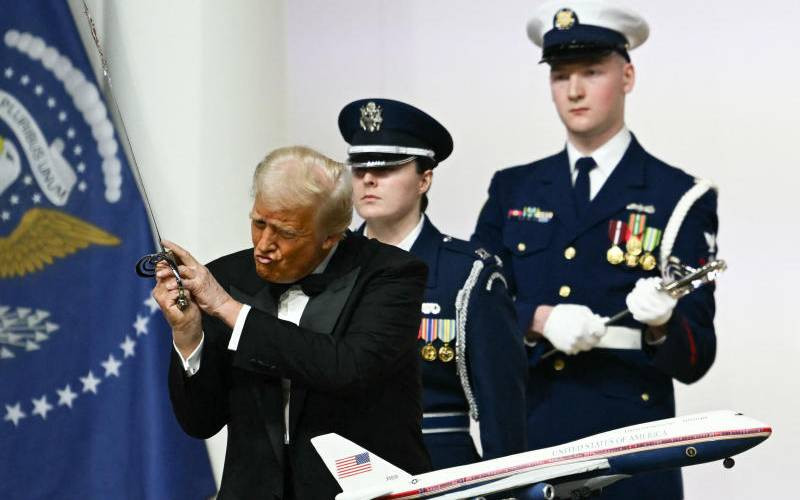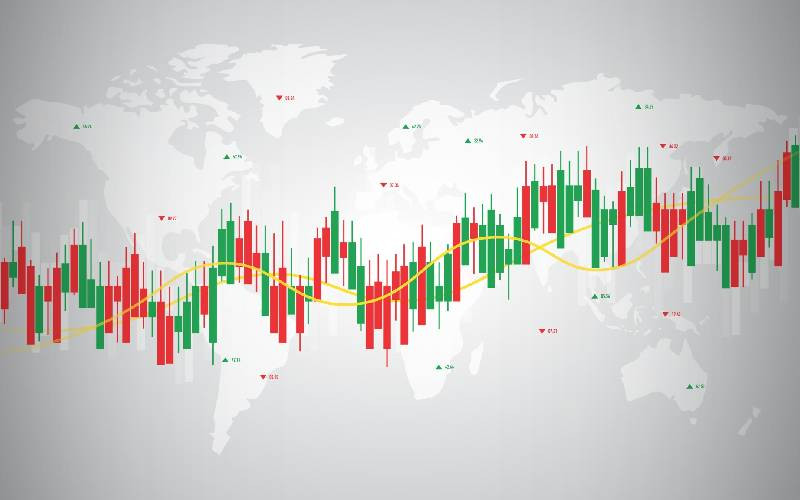
Have you ever heard of candlestick patterns?
Analyzing the market and more specifically its ups and downs is a great way to become better at trading. Since the emergence of trading, traders have invented different ways (often complex ones) of analyzing the markets and gaining an edge in order to make some profits. Candlestick patterns are a tool many traders implement, and in this article, we’re going to talk about what they are, how they work and their effectiveness.
Let’s dive in.
Key takeaways:
- What is a Candlestick pattern
- How and when to use a Candlestick pattern
- What are some of the most popular Candlestick patterns
- Brokers that help you recognise Candlestick patterns easily
What is a candlestick pattern?
It’s not as complicated as it sounds.
The first use of candlestick charts was in Japan in the 18th century when finance noticed that there was a correlation between the supply and demand and price of rice, and as you might have guessed consumers’ emotions affect the changes in price.
In practice, candlestick charts represent the level of traders' sentiment, emotional thinking, and decision-making in the market. Candlestick charts help traders to predict short-term price changes and make their buying and selling decisions accordingly.
The essential parts of a candlestick
Each candlestick has four essential parts:
- High price
- Low price
- Open price
- Close price
What do these terms tell us about online trading?
Each day starts with the open price and closes with, you guessed it, the close price. But, during the day the highest and lowest price might differ from the close price and open price, so it’s vital to also know the high and low price of each day.
You might have seen one of those charts; most of the time these candlesticks are either red or green. If they are red, it means that the close price was lower than the open price.
Examples of candlestick patterns
There are various candlestick patterns that experts argue lead to specific results most of the time (whether the market will have an upturn or a downturn).
The price of a product in the market is dynamic, meaning that it either moves up or down.
What is a candlestick pattern then?
Like we said, the price moves up and down; but many times the price tends to create a series of ups and downs which helps traders predict future price movements based on these patterns.
However, it’s important to mention that even though these patterns can help you predict future movements, this doesn’t mean that these price shifts and directions are guaranteed. In other words, there’s not a single pattern that can guarantee 100% that the price of an asset will go either up or down.
Candlestick Patterns are divided into two categories:
- Bullish patterns: They indicate a possible uptrend.
- Bearish patterns: They indicate a possible downtrend.
Let’s go over these patterns one by one to help you get a better understanding of how candlestick patterns work.
Bearish engulfing pattern
The pattern in this case is characterized by a streak of days where the price increases to a point that the supply is higher than the demand and as a result the price starts dropping.
Bullish engulfing pattern
The bullish engulfing pattern is pretty much the opposite of the bearish engulfing pattern where the demand is higher than the supply and the price inevitably goes up.
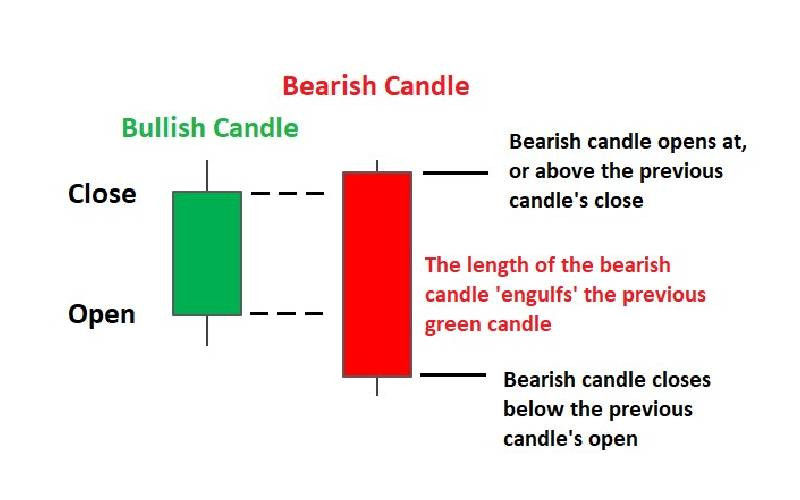
Let’s talk about the pros and cons of the bearish and bullish engulfing pattern.
Pros
- It’s based on the simple principle of what goes up, will go down.
- A continuous uptrend often means there’s going to be a decline in price eventually.
- It’s easy to identify the engulfing pattern.
Cons
- There’s no guarantee that a continuous uptrend is followed by a drop in price.
- Streaks of continuous increase or decrease might take longer than this pattern predicts.
Bullish harami
A bullish harami pattern starts with days of increase in price and as the days go on, the percentage of increase slows down. Typically, this means that buyers become hesitant to trade this specific asset. The most important element of this pattern is to see what happens next; if the price starts declining the pattern’s prediction is that it will continue to go down. On the other hand, if the price rises, it will keep increasing.
Bearish harami
Similar to the engulfing pattern, the bearish harami pattern is the opposite of bullish harami. How does it work then? Normally, there’s a number of consecutive days that the price drops and traders become hesitant to sell. This often leads to a small increase in price. What might happen next? Will the price go up? If so, the price is going to continue this way. But if the price goes down (you guessed it), it’s most likely the price will drop.
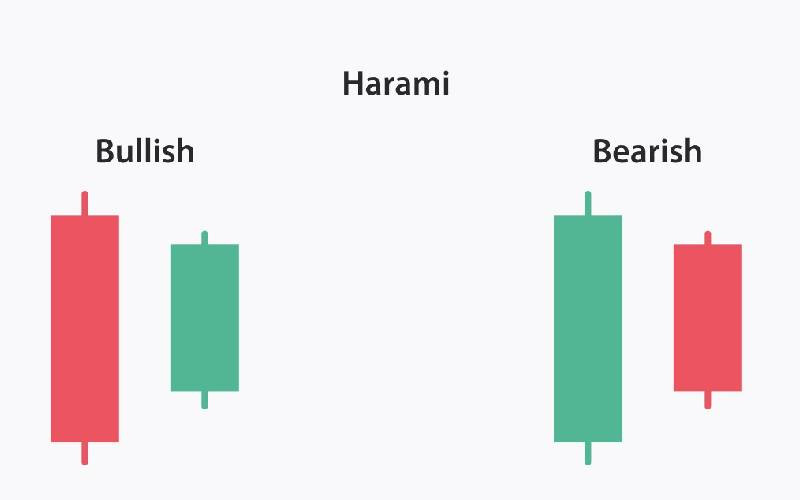
Here are the pros and cons of the bullish and bearish harami patterns:
Pros
- They are easy to notice, and they have different steps which can easily be recognized.
- You can easily identify the point where the price will change direction.
Cons
- There’s no guarantee that when the buyers and sellers become hesitant, the price in the market will follow the trajectory the pattern suggests.
Bullish harami cross
A bullish harami cross happens when the price of a product keeps dropping during the last few days and on the last day the open price is the same as the close (hence the name ‘cross’ since it looks like one). What about the price prediction? Much like the bullish harami pattern, the theory of this pattern is that if the price goes up, it will continue in this direction the next day as well.
Bearish harami cross
The bearish harami cross is the exact opposite of the Bullish Harami Cross pattern. How does it work, though? It’s characterized by an uptrend and reaches a point where the open price is the same with the close price. Similar to the bullish harami cross, the most important thing is to see what happens next. If the price reverses, it will continue to go up. If not, it will keep decreasing.
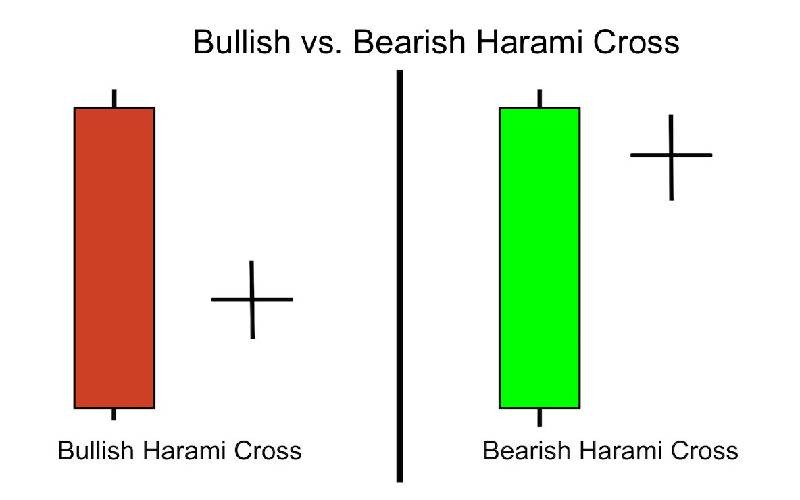
Let’s take a look at the pros and cons of these patterns:
Pros
- They are easy to recognize by identifying the cross.
- The theory is simple to comprehend and apply.
Cons
- The fact that you have to wait before investing to identify the pattern might put off many traders.
How to use candlestick patterns the right way?
There are various tools that can help you analyze charts with candlesticks.
For example, you can analyze candlestick patterns using TradingView. It’s a great tool, though many newcomers find it a bit challenging. Using different drawing tools, you can look for patterns on the chart, which also requires an understanding of the chart itself.
The good news is that there are top-notch brokers with excellent trading platforms out there that do the heavy lifting for you and alert you when such patterns appear.
Why should you perform candlestick analysis on your own when you can simply register with a broker that provides this kind of analysis and helps you identify candlestick patterns like the ones we described above in minimum time and effort?
Let’s talk about three brokers that provide features related to candlestick patterns.
Exness
Exness is a reputable broker that thousands of professional traders trust. Exness provides a variety of products and some unique features to help traders reach their full potential. You can trade stocks, cryptocurrencies, commodities, forex and indices. You can opt to trade through the Exness Terminal platform where you have access to candlestick charts, as well as a variety of other customizable tools, to help you focus on what you are most interested in, all achievable with a few clicks.
Tickmill
Tickmill is known for the research and analysis tools it provides to its users. They offer different trading products including forex, bonds, commodities, stocks and crypto. With their Forex calculators and signal center you can simplify your trading process and quickly lock your positions.
BDSwiss
This is another broker to take into consideration before you decide on which broker you opt for. They offer different trading products from indices and forex to crypto. With BDSWISS, you’ll be able to market research analysis reviews, technical analyses and daily videos with insightful breakdowns about the market.
Summing up
There are a few ways to separate the amateur traders from the real pros.
An easy one is whether a trader is able to do data analysis and draw conclusions, more specifically to notice candlestick patterns and stay on top of upcoming changes in price. This will give you the edge as a day trader and you’ll be steps ahead of other traders.
 The Standard Group Plc is a multi-media organization with investments in media
platforms spanning newspaper print operations, television, radio broadcasting,
digital and online services. The Standard Group is recognized as a leading
multi-media house in Kenya with a key influence in matters of national and
international interest.
The Standard Group Plc is a multi-media organization with investments in media
platforms spanning newspaper print operations, television, radio broadcasting,
digital and online services. The Standard Group is recognized as a leading
multi-media house in Kenya with a key influence in matters of national and
international interest.
 The Standard Group Plc is a multi-media organization with investments in media
platforms spanning newspaper print operations, television, radio broadcasting,
digital and online services. The Standard Group is recognized as a leading
multi-media house in Kenya with a key influence in matters of national and
international interest.
The Standard Group Plc is a multi-media organization with investments in media
platforms spanning newspaper print operations, television, radio broadcasting,
digital and online services. The Standard Group is recognized as a leading
multi-media house in Kenya with a key influence in matters of national and
international interest.











